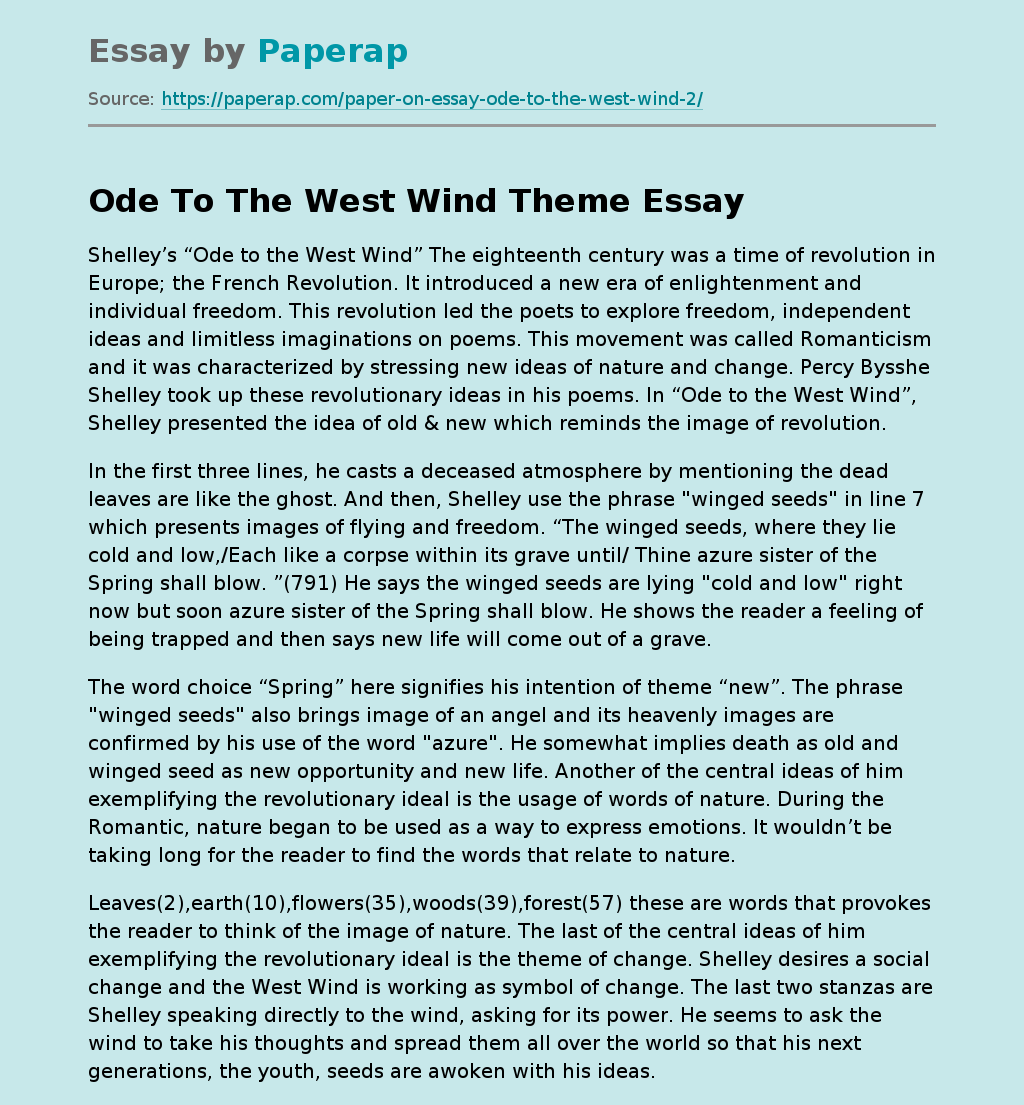Ode To The West Wind Theme
Shelley’s “Ode to the West Wind” The eighteenth century was a time of revolution in Europe; the French Revolution. It introduced a new era of enlightenment and individual freedom. This revolution led the poets to explore freedom, independent ideas and limitless imaginations on poems. This movement was called Romanticism and it was characterized by stressing new ideas of nature and change. Percy Bysshe Shelley took up these revolutionary ideas in his poems. In “Ode to the West Wind”, Shelley presented the idea of old & new which reminds the image of revolution.
In the first three lines, he casts a deceased atmosphere by mentioning the dead leaves are like the ghost. And then, Shelley use the phrase “winged seeds” in line 7 which presents images of flying and freedom. “The winged seeds, where they lie cold and low,/Each like a corpse within its grave until/ Thine azure sister of the Spring shall blow.
”(791) He says the winged seeds are lying “cold and low” right now but soon azure sister of the Spring shall blow. He shows the reader a feeling of being trapped and then says new life will come out of a grave.
The word choice “Spring” here signifies his intention of theme “new”. The phrase “winged seeds” also brings image of an angel and its heavenly images are confirmed by his use of the word “azure”. He somewhat implies death as old and winged seed as new opportunity and new life. Another of the central ideas of him exemplifying the revolutionary ideal is the usage of words of nature.
During the Romantic, nature began to be used as a way to express emotions. It wouldn’t be taking long for the reader to find the words that relate to nature.
Leaves(2),earth(10),flowers(35),woods(39),forest(57) these are words that provokes the reader to think of the image of nature. The last of the central ideas of him exemplifying the revolutionary ideal is the theme of change. Shelley desires a social change and the West Wind is working as symbol of change. The last two stanzas are Shelley speaking directly to the wind, asking for its power. He seems to ask the wind to take his thoughts and spread them all over the world so that his next generations, the youth, seeds are awoken with his ideas.
Ode To The West Wind Theme. (2019, Jun 20). Retrieved from https://paperap.com/paper-on-essay-ode-to-the-west-wind-2/

